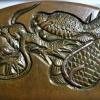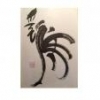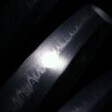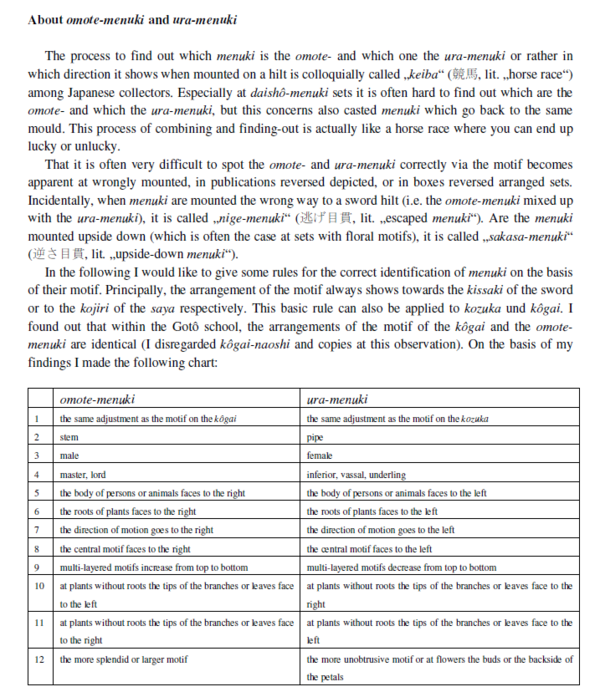All Activity
- Past hour
-
So doing some comparisons. There's a takenori in good polish and condition for 4k ATM unsold online. So add the cost of polish (if possible) online example also has shirisaya so add cost for that. I don't know how much a polish in the USA is? Worth the effort? Probably not for a casual collector and also we don't know how much has been done to the blade, how much Hamon is there or boshi is left. I agree with Brian For the investment you could get something un-abused
-
This is a blade from Kotani Yasunori, signed Takenori for the blades he smithed out of the yasukuni shrine. Showa 15 = 1940 (december) 1000$ is really nice for this blade. Would of course need a full polish but I think it would be a great investment If you don't want to keep im sure people will make you offers !
- Today
-
Oh, without doubt you could, Cole. Though you should bear in mind that would be like swapping a Jaguar in need of a full respray with a decent Nissan.
-
Thank you all. S Alexander Takeuchi says: "In case of an animal motif, the “heads” should be oriented toward fuchi while the “tails” should be oriented toward kashira" Iiyama Yoshimasa says: "Principally, the arrangement of the motif always shows towards the kissaki of the sword or to the kojiri of the saya respectively." And: "Omote-menuki: the body of persons or animals faces to the right Ura-menuki: the body of persons or animals faces to the left" So, as I've got two oxen and two goats all walking left, it sounds like Charlie's "doesn't matter in this case" is the winner. (Unless the sole goat looking backward has a hitherto unknown esoteric meaning.)
-
Great reference Brian! Allow me to add this as well (Menuki – Sono rekishi to igi ni tsuite - Iiyama Yoshimasa - extract from Token Bujitsu 09/2011 - translated by Markus Sesko)
-
Good sword most likely. But probably belongs with someone who will spend the money having it professionally restored. This isn't a sword for someone who just wants a nice wartime sword. You could likely swap it for a decent Showato here. Will cost a lot to put the edge back (you don't sharpen a Japanese sword, it's somewhat of a by-product of a proper polish) so swap it out and get what you really want. This will likely be a stunning blade once restored. Yes...someone took off the edge deliberately. Very sad...maybe they had kids. Who knows. But it's not ruined.
-
Well worth a refresher read
-
GlassBucket joined the community
-
So if anyone sees this, I’m the one who finally bought it. I found this thread on here after I already bought it and it’s already on its way to me. Did I make a mistake in buying it 😭 I spend like 8000 US dollars on it but even though I have no intention of ever selling this was the purchase a bad decision? I’m honestly a new katana enthusiast and don’t have nearly as much knowledge as you guys do so I think maybe I made a hasty decision. I rly loved the proportions of the sword and I rly wanted an antique nihonto with a koshirae and this fit what I was looking for. Lowkey looking for some reassurance since I can’t refund it and I sunk a large part of my extra money in this.
-

Any idea what time period this could be from ?
Alex A replied to klee's topic in General Nihonto Related Discussion
Yes, one on a site a few weeks ago, Tadahiro. -
For those who have done it recently, I am curious about the process of exporting a sword through Narita airport as you leave Japan. Obviously, the export permit has to be approved in advance. How hard was the actual airport experience, especially with zero language skills?
-

Would like info on this sword I got from my Father
Bruce Pennington replied to Pike's topic in Military Swords of Japan
Hi Larry! The guys have given you all the big stuff. You can learn more about these on the following sites: Naval Officers Shingunto 1937 - Ohmura and 1937 Launch of Navy Officers Gunto - Nick Komiya The thin cord tied to the haikan (belt hanger loops) has a name which I cannot remember ( @PNSSHOGUN could tell us), and is properly attached like so: or Very nice sword! -
Swords made outside the Yasukuni shrine by Yasunori Kotani were signed Takenori, they are often more lively in Hamon & Sugata. For a thousand bucks you did pretty well. @Bruce Pennington 1940 dated so firmly in the Type 98 realm.
-

Nlf Gunto Discussion
Bruce Pennington replied to Bruce Pennington's topic in Military Swords of Japan
Excellent Tony, thank you! Our first "48". -
Good catch, Dee! @PNSSHOGUN John would be the guy to tell you whether this was a Type 94 or 98. There was a regulation that required the dulling of blades during peacetime, but would not have impacted a blade made during WWII. By the shiny-ness of the edge, I would say someone did the dulling after WWII for their own reasons. I don't follow the gendaito and Yasukuni shrine swords, but from what Dee said, this blade would be worth a polish. Cole, value-wise, this blade is worth preserving, even polishing, but you'll wait on a wait-list for 2 years before you even get to send in the blade. If you simply want something cool to hang on the wall, this is still a good one, unpolished. Yet, if you're looking for something unmolested by post-war collectors, a return would not be out of line.
-
Hi Dee, I would say it probably doesn't matter in this case since the flow of both pieces is in the same direction. The direction of the body, not the head, usually determines the direction of the animal pattern. Best, C. C.
-
It's a highly sought after Yasukuni smith so don't be so quick to return it. Yasunori signed Takenori when he made blades away from the shrine. If the edge has just been dulled by about a millimetre, the hamon is probably all still there and it can be polished out. (And his swords go for way more than $1,000 - so ignore any "I'll take it off your hands for what you paid for it" PMs.) You can find out more information on him from this old listing from Yakiba.com https://yakiba.com/yasunori-kotani/
-

Please help Wakizashi identification
SteveM replied to Steven6's topic in General Nihonto Related Discussion
I don't think NBTHK holds regular appraisal sessions in the US anymore. So their appraisals have to be done in Japan, unless they announce a special US session. And there is now a limit on the number of submissions that the NBTHK will accept for each session, so the submissions have to go through a kind of lottery process to get accepted. Basically the submission process is 1. Submit your item to a broker in Japan two months prior to the beginning of the appraisal submission process. 2. Have your broker register the sword in Japan. (i.e. Get the sword licensed so it can be submitted for authentication). 3. Have your broker apply for a spot in the appraisal session (sessions are held a few times a year). 4. Make an application to the NBTHK to get your sword appraised. If accepted, have your broker submit the item for appraisal. 5. Wait for results of the appraisal (takes about two-three months, nowadays). The next appraisal session for swords in the Hozon/Tokubetesu Hozon category (which is what your sword would qualify for), is in September, so its already a bit too late to start the process for that. The one after September is November. There are a few agents who can act as broker. Robert Hughes at Keichodo comes to mind, but there are others. There is another organization, the similarly-named NTHK, and they do appraisals in the US from time-to-time. That might be of interest to you, since it potentially involves less legwork and less risk. Regarding restoration, your agent should be able to handle that process as well. Usually it involves several craftsmen in Japan. It can be done in the US as well, but I wouldn't put the cart in front of the horse just yet. Regarding having the item "reattached" to its original home - that is a bit cryptic. Are you talking about returning it to its ancestral owners? If so, it would be impossible unless you have some paperwork that goes with the sword. Without any paperwork, there is no way to trace the original owners. Even with a name (as sometimes these war souvenirs have name tags on them) it can be difficult to sort out who the owner was, and whether or not his descendants are still around, and if they are interested in having an item like this returned to them. -

Would like info on this sword I got from my Father
mecox replied to Pike's topic in Military Swords of Japan
Larry, it is a good example of an early 1940's Naval kaigunto, stainless steel but custom mounts with same covered scabbard (saya). As noted the mei is "Tenshozan Tanrenjo saku" the place where it was made. The paper below has a good explanation of Naval swords. Look for your mei, also see table P. 118. The surrender tag says "Kaigun Taisa Nakane Ganjiro" Naval Captain Nakane (given name Ganjiro). -
It was multiple back in the day. Museums still open and museums now defunct did all sorts of things to them. Tiffany made a fireplace hood out of them. https://morsemuseum.org/on-exhibit/fireplace-hood-installation/ (look closely). Even more respectable museums like the Boston Museum of Fine Arts somehow managed to trash a lot of their sukashi tsuba. They look fine from the top, but an angled view shows many have been turned into swiss cheese. Who knows how they did that? Super special sauce to inhibit the naturally forming rust inside the sukashi? (my first guess) Yours got off lucky.
-
Hi guys. Im going to buy some swords that had the seppa and tsuba removed and lost by the previous owner in there old age. Whats the approx cost of seppa being made to fit. Regards H
-
Thank you much. Back on the hunt for one, was only on the hunt for a couple months.
-
No doubt. And your gut gives the best advice. I agree with Rawa and Lareon. We’ll be here if you have questions while shopping around Best of luck, -Sam
- Yesterday
-
Really good read. Thank you. "Like fresh snow under moonlight" was such a poetic and accurate description I ended up spending a long time on that image















